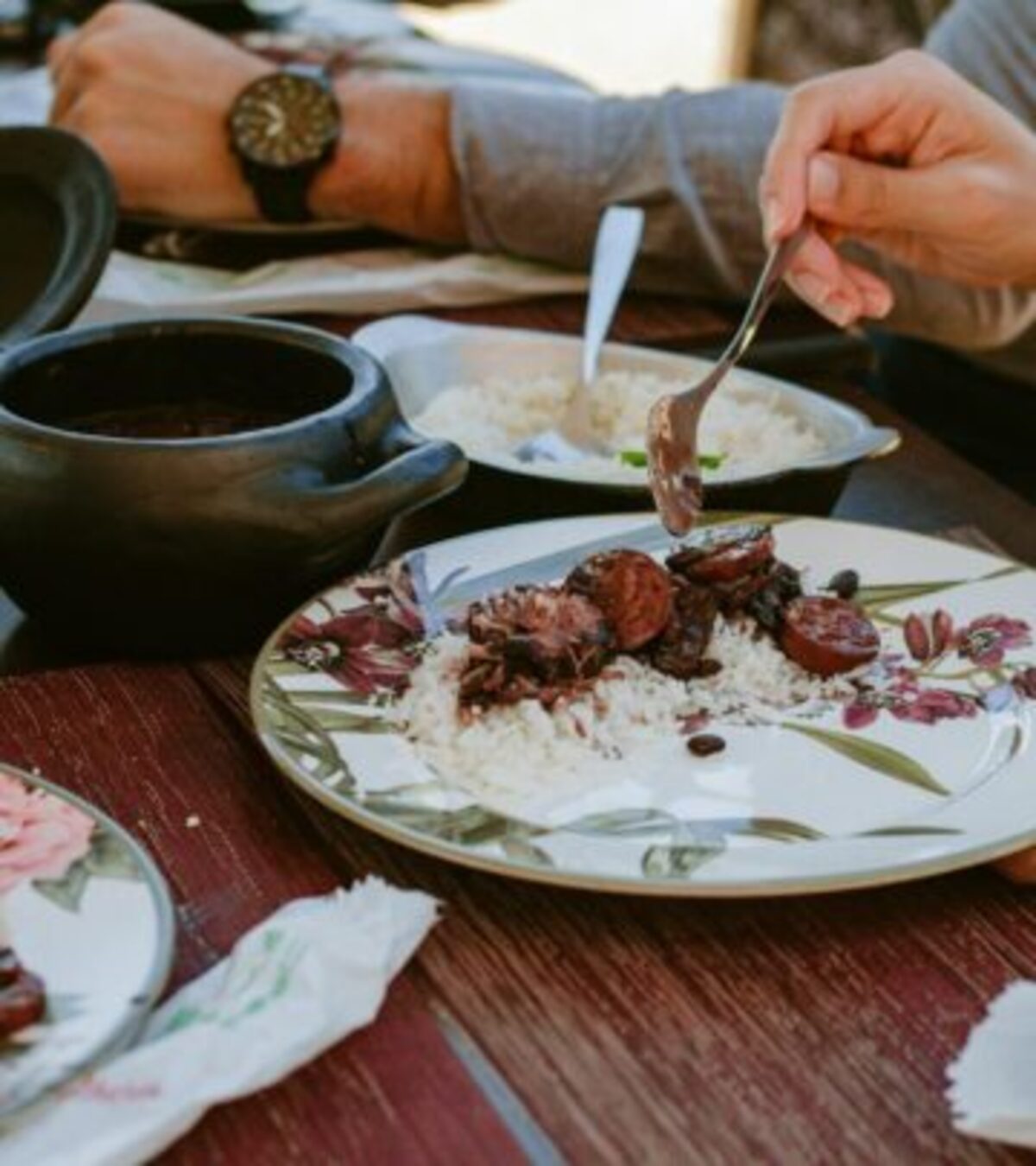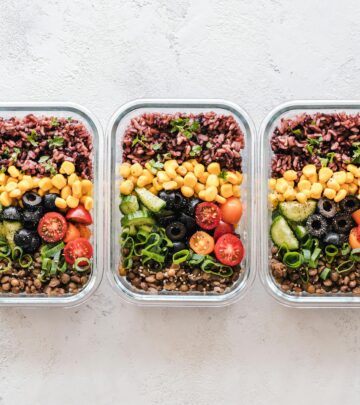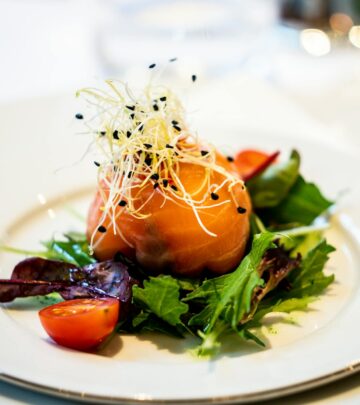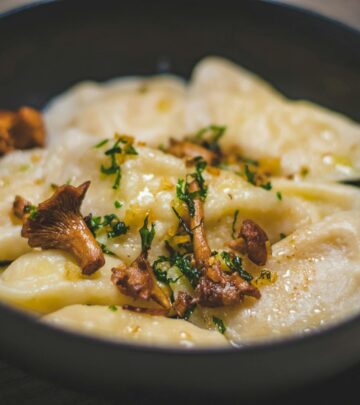Brazilian Feijoada Recipe: Ultimate Guide To Authentic Stew
Discover the iconic flavors, history, and step-by-step preparation of Brazil's national dish, Feijoada, a rich, meaty black bean stew.

Feijoada: The Ultimate Guide to Brazilian Black Bean Stew
Feijoada is Brazil’s most iconic dish, a smoky, hearty, and deeply flavorful black bean stew brimming with a variety of meats. Originating from Portuguese culinary traditions and adapted by enslaved Africans in colonial Brazil, feijoada reflects Brazil’s multicultural history and spirit of culinary improvisation. Today, it’s not just a beloved comfort food but a symbol of Brazilian heritage, often enjoyed at family gatherings and special occasions.
What Is Feijoada?
At its core, feijoada is a slow-cooked stew of black beans (feijão), assorted salty and smoked pork and beef cuts, garlic, onions, and aromatic herbs. Traditionally, this dish brings together leftover or less expensive meats—such as pork shoulder, ribs, sausages, bacon, and smoked beef—simmered until everything is meltingly tender and infused with a deep, rich flavor. Served with rice, orange slices, sautéed greens, and farofa (toasted cassava flour), feijoada is as festive as it is nourishing.
Key Ingredients
Making authentic feijoada requires patience and an assortment of flavorful ingredients. Here’s what you’ll need for a classic version:
- Black Beans: The base of feijoada. Dried beans are preferred for the best texture and flavor.
- Pork Shoulder: Adds rich, meaty flavor and gets beautifully tender during the long simmer.
- Bacon: Adds smokiness and savory depth.
- Smoked Sausage: Linguica, chorizo, or kielbasa are traditional choices for hearty, spicy notes.
- Fresh Sausage: Spicy Italian or any favorite sausage works.
- Smoked Ham Hock: Infuses the beans with smokiness and yields succulent meat.
- Garlic and Onion: Essential flavor base for the stew.
- Bay Leaves: Classic herbal aroma.
- Salt and Pepper: To taste, since meats are often very salty.
- Beef Bouillon Base: Optional, for an extra umami punch.
- Orange Slices: Washed and sliced, for serving; their acidity cuts through the richness.
- Hot Sauce: According to preference, for heat.
Essential Tools and Equipment
- Large Dutch Oven or Heavy-Bottomed Pot
- Sharp Chef’s Knife and Cutting Board
- Skillet (for browning meats and aromatics)
- Ladle for Serving
Traditionally, some cooks prefer a clay pot for slow-cooking, but a quality Dutch oven or stockpot works beautifully.
Preparing Feijoada: Step-by-Step
1. Soak the Beans (and Salty Meats If Needed)
- Rinse 1 pound of dried black beans and soak overnight in abundant cold water.
- If using salted meats (like carne seca or salted pork), soak for 24 hours in the refrigerator, changing the water three times to remove excess salt.
2. Parboil the Meats (If Using Salty Cuts or Smoked Meats)
- Place meat pieces in a large pot, cover with water, and bring to a boil. Simmer for 20 minutes. This draws out salt and some fat, resulting in a balanced stew.
3. Sauté the Aromatics and Meats
- Heat 3 tbsp oil in a large Dutch oven over medium heat. Sauté sliced onions until translucent; add minced garlic and cook until fragrant.
- Add bacon, cook until crisp; then add sausage (both types), browning well for extra flavor.
- Add pork shoulder chunks, browning on all sides. Reserve the smoked ham hock for simmering with the beans.
4. Simmer the Stew
- Drain soaked beans and add them to the pot with the sautéed meats and aromatics.
- Pour in enough water to cover everything by at least 2 inches.
- Stir in bay leaves, pepper, and beef bouillon base. Add the ham hock.
- Bring to a boil, then reduce to a gentle simmer. Cover and cook, stirring occasionally, for 2.5 to 3 hours. Add more water if needed to keep everything submerged.
- When beans and meats are tender, remove the ham hock, shred the meat, discard the bone, and return meat to the pot.
- Check seasoning, adding salt and pepper as needed.
5. Final Touches
- If a thicker consistency is preferred, mash some of the beans against the side of the pot and stir them back in.
- Adjust heat with hot sauce to taste.
Serving Suggestions
Feijoada is traditionally served with simple but complementary sides:
- Steamed White Rice: The classic base for the stew, soaking up the rich sauce.
- Farofa: Toasted cassava flour, often mixed with bacon or sausage, adds a nutty crunch and texture.
- Sautéed Collard Greens (Couve): Finely sliced and quickly sautéed with garlic and oil, these provide a bright, earthy contrast.
- Orange Slices: The acidity and sweetness of fresh oranges help cut through the stew’s richness.
- Hot Sauce: Spice things up to your liking.
Variations and Adaptations
- Meat Choices: Feijoada is flexible; use a mix of pork shoulder, ribs, bacon, smoked and fresh sausage, or beef cuts. Smoked meats like ham hock add essential flavor but can be swapped for smoked turkey legs or other sausages in a pinch.
- Vegetarian Feijoada: Substitute meats with additional vegetables (such as sweet potatoes and carrots), smoked paprika, and liquid smoke for a plant-based yet flavorful version.
- Crockpot/Slow Cooker: This stew adapts well to slow cookers. Sauté meats and aromatics first for best flavor, then combine all ingredients in the slow cooker and cook on low for 8-10 hours.
- Instant Pot/Pressure Cooker: Cuts down cooking time; pressure cook the soaked beans and browned meats for about 35-40 minutes.
Tips for Success
- Don’t rush the simmer: Slow cooking is key to achieving velvety beans and tender, flavorful meats.
- Skim the fat: Feijoada can be quite rich; skim off excess fat during or after cooking as desired.
- Flavor improves with time: Like many stews, feijoada tastes even better the next day, making it an ideal make-ahead dish.
- Balance saltiness: Taste as you go—smoked and salted meats can make the dish overly salty if not soaked or parboiled properly.
Nutrition and Dietary Notes
Feijoada is a protein-rich meal that also provides fiber from the black beans. It is a hearty dish that, while traditionally quite meaty and rich in sodium, can be adapted to fit different dietary needs by adjusting the types and quantities of meats used. The addition of rice, greens, and oranges round out the meal for both nutrition and flavor.
Feijoada Around the World
While feijoada is best known as the national dish of Brazil, variations of bean-and-meat stews exist in Portugal and across Latin America. In Brazil, feijoada is closely associated with Afro-Brazilian communities and is often served at communal gatherings, family events, and even in restaurants specializing in traditional cuisine. Each region puts its own spin on the dish, from the meats chosen to the accompaniments served alongside.
Storage and Reheating
- Store leftover feijoada in airtight containers in the refrigerator for up to 4 days.
- For longer storage, freeze in portioned containers for up to 3 months. Thaw overnight in the fridge before reheating.
- Reheat gently on the stove, adding a splash of water to loosen the consistency as needed.
Frequently Asked Questions (FAQs)
Q: Can I make feijoada without pork?
A: Yes. You can substitute pork with beef cuts, smoked turkey, or use only smoked sausages for flavor. Vegetarians may opt for extra beans, mushrooms, and smoked ingredients for depth.
Q: What’s the best way to thicken feijoada?
A: Mash a portion of the cooked beans against the side of the pot and stir them back in. This naturally thickens the stew without altering the flavor.
Q: Why do you serve orange slices with feijoada?
A: Orange slices provide a sweet, acidic contrast that cuts through the richness and fattiness of the stew, brightening the overall flavor.
Q: Can I make feijoada in advance?
A: Absolutely. Feijoada tastes even better the next day as the flavors meld. It is excellent for meal prepping or serving at parties.
Q: What type of rice is best for serving with feijoada?
A: Plain steamed white rice is traditional, but brown rice or even a blend can be used for a healthier twist.
Recipe at a Glance
| Yield | 8 servings |
|---|---|
| Preparation Time | 30 minutes (plus soaking time for beans and meats) |
| Cooking Time | 3 to 3.5 hours |
| Total Time | 1 day (including soaking and preparation) |
Classic Feijoada Recipe
- 1 pound dried black beans (soaked overnight)
- 1 pound pork shoulder, cut into chunks
- ½ pound thick sliced bacon, cut into pieces
- ½ pound fresh sausage, casings removed and crumbled
- ½ pound smoked sausage (linguica or kielbasa), sliced
- 1 smoked ham hock
- 2 large onions, sliced
- 5 cloves garlic, minced
- 4 bay leaves
- 1 Tbsp beef bouillon base (optional)
- Salt and pepper to taste
- 3 Tbsp oil
- Orange slices, hot sauce for serving
Preparation steps are detailed above in the Step-by-Step section.
Conclusion
Feijoada is more than just a stew—it is a celebration of heritage, resourcefulness, and Brazil’s vibrant culinary spirit. With its comforting flavors and communal nature, feijoada brings friends and families to the table, making every meal a feast. Whether you stick with the traditional recipe or adapt it for dietary needs and available ingredients, feijoada promises satisfaction in every savory bite.
References
- https://www.allrecipes.com/recipe/139208/feijoada-brazilian-black-bean-stew/
- https://www.daringgourmet.com/feijoada/
- https://www.dinnerwithjulie.com/2016/12/08/feijoada-brazilian-black-bean-stew/
- https://texasdebrazil.com/recipes/feijoada-with-crispy-farofa-topping-brazilian-black-beans/
- https://www.oliviascuisine.com/feijoada-recipe/
Read full bio of Shinta

















Community Experiences
Join the conversation and become a part of our empowering community! Share your stories, experiences, and insights to connect with other beauty, lifestyle, and health enthusiasts.